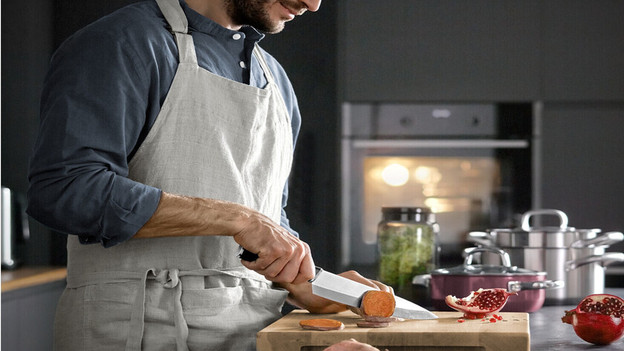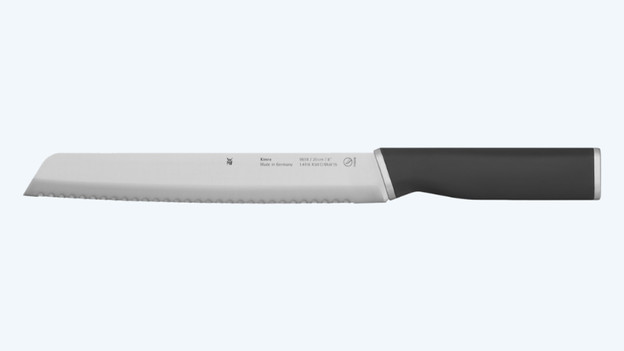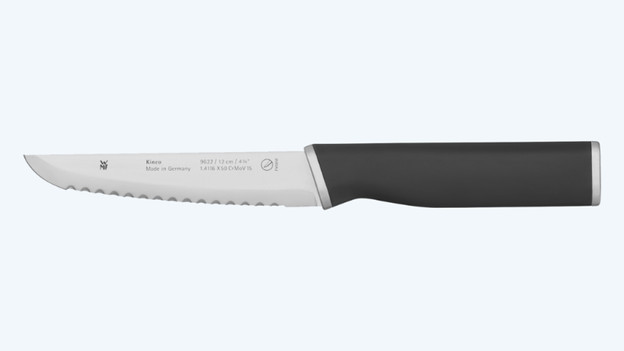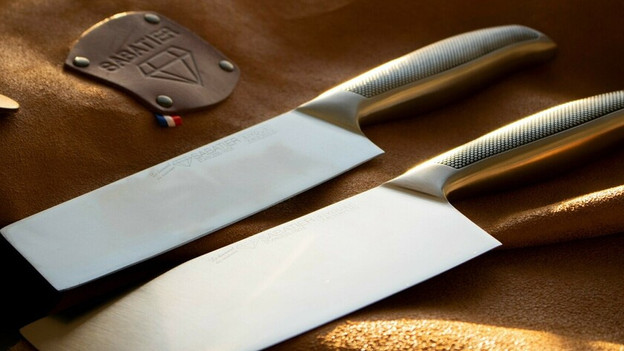
Written by Joey
Edited on
30 September 2022
·
15:33
How do you choose a kitchen knife?
You're not sure which type of kitchen knife to buy. Ask yourself the following questions. Which ingredients do you want to cut? And do you want to buy a European or Japanese knife? In this article, we'll go over these questions with you, so you can choose the most suitable kitchen knife for you.

Choose a kitchen knife
Ask yourself the following questions before you choose a kitchen knife:
- Which ingredients do you want to cut?
- Do you want to buy a European or Japanese knife?
Which knife do you need for your ingredients?

Chef's knife and santoku knife
To cut meat, fish, vegetables, and herbs, you can use a chef's or santoku knife. These knifes are about 20cm long on average, and have a large and wide cutting surface

Meat knife
You can cut and carve meat, fish, and poultry with a meat knife. Just like the chef's knife, these knives are about 20cm long on average, but they have a long and slim cutting surface.

Bread knife
A bread knife is 2cm longer on average than a chef's knife or meat knife. The cutting surface is large and serrated. You can use this knife to cut bread and soft foods.

Vegetable knife
With a vegetable knife, you can cut and peel your vegetables and fruits. Vegetable knives are 10cm long on average, and have a small and sturdy cutting surface.

Peeling knife
A peeler is quite similar to a vegetable knife. The difference is that it's often smaller and you can also use it for garnishing, in addition to cutting and peeling vegetables and fruits. The knife has a small and slim cutting surface.

Do you want to buy a European or Japanese knife?
European blades usually have a sharpening angle of 20 degrees per side, while Japanese blades have one of about 15 degrees. A narrower sharpening angle gives the knife a sharper cut, so you can cut with great precision and ease. This narrow sharpening angle is possible because the steel of Japanese knives is harder than the steel of European knives. Keep in mind that harder knives are more fragile.
Article by Joey
Kitchen Knife Expert.
